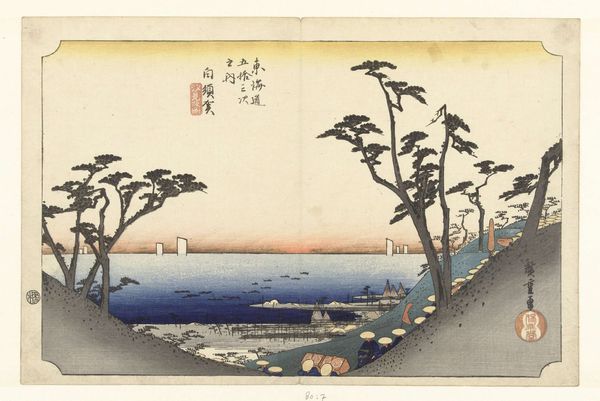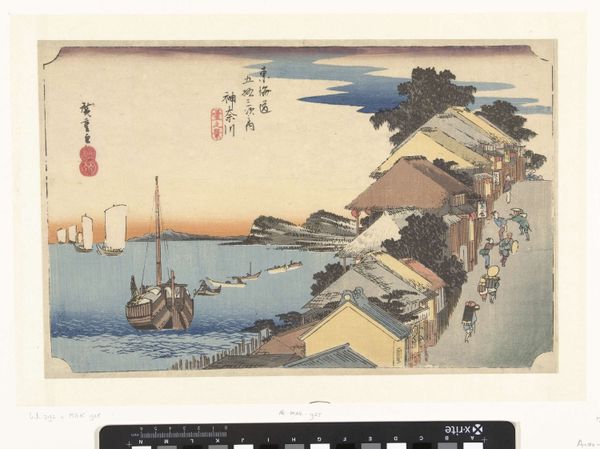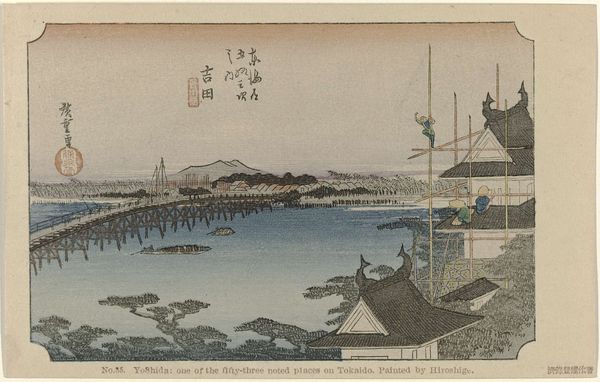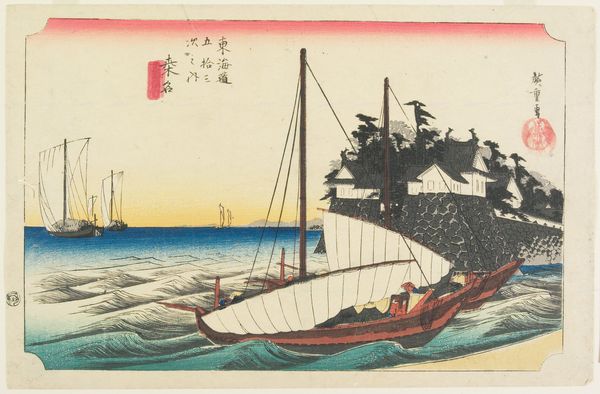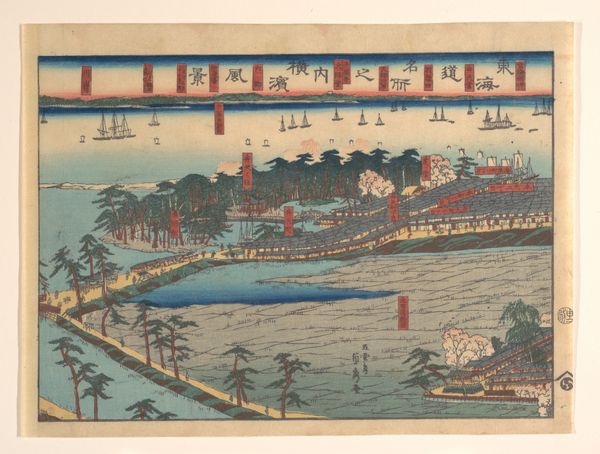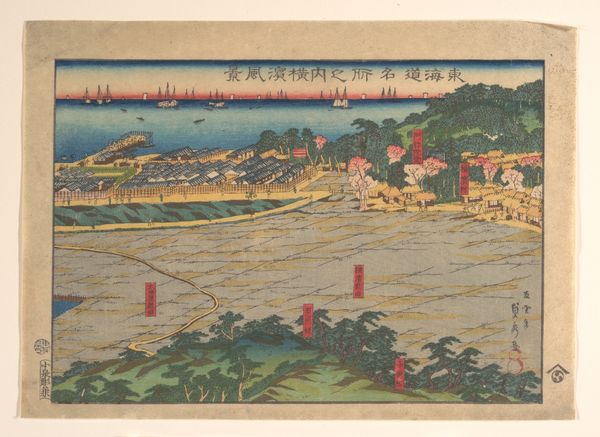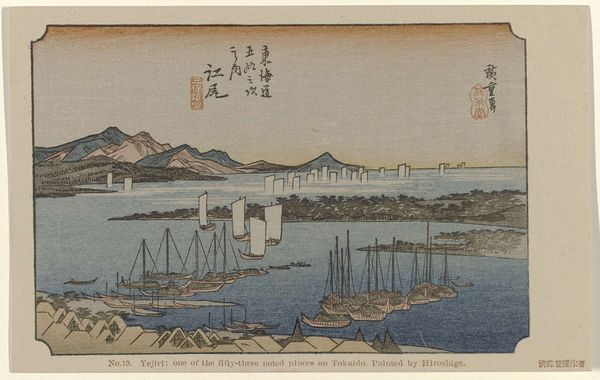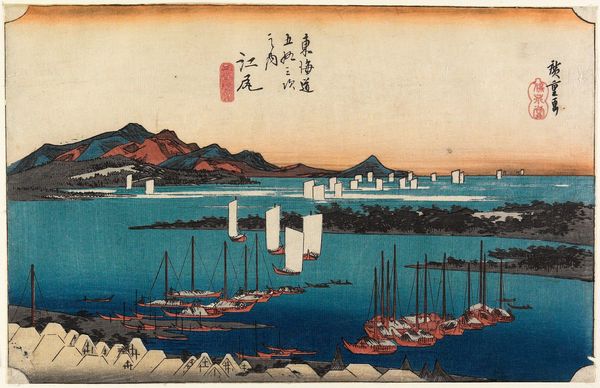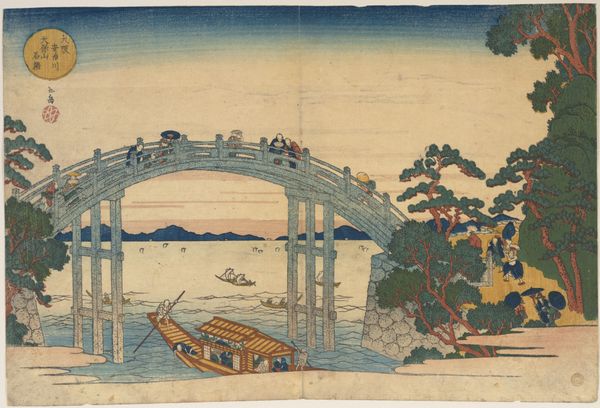
Dimensions: height 244 mm, width 363 mm
Copyright: Rijks Museum: Open Domain
Editor: Here we have "Yoshida, de brug over de Toyo rivier", a print, likely a woodblock print, created between 1828 and 1835 by Utagawa Hiroshige, currently housed in the Rijksmuseum. The deep blue of the water immediately draws my eye, it is so arresting! How do you approach interpreting a piece like this, with such strong color contrasts? Curator: I focus on the arrangement of the elements, how Hiroshige uses line and color to construct the composition. Note how the bridge cuts horizontally, almost bisecting the image, contrasting the serene river with the implied bustling activity across it. Do you see how the textures in the water and foliage offer depth without relying on traditional perspective? Editor: Yes, it's almost like a flat plane, but the varying shades of blue and the linework create a sense of distance. I'm also intrigued by the building under construction on the right – what does it signify, structurally speaking? Curator: The scaffolding, juxtaposed against the established bridge, presents an interesting formal tension. The solid horizontal versus the fragile verticals and diagonals. The artist's intentional placement encourages a reading about impermanence set against permanence, all within a landscape. What meaning arises for you in this tension? Editor: I see! It brings a dynamic quality to what might otherwise be a purely scenic view. Perhaps it speaks to the constant cycle of building and rebuilding. Thanks! Curator: Precisely. And it showcases Hiroshige’s mastery in manipulating form to evoke intellectual and emotional responses, leading us beyond mere representational art. A brilliant application of visual architecture, don't you think?
Comments
No comments
Be the first to comment and join the conversation on the ultimate creative platform.


